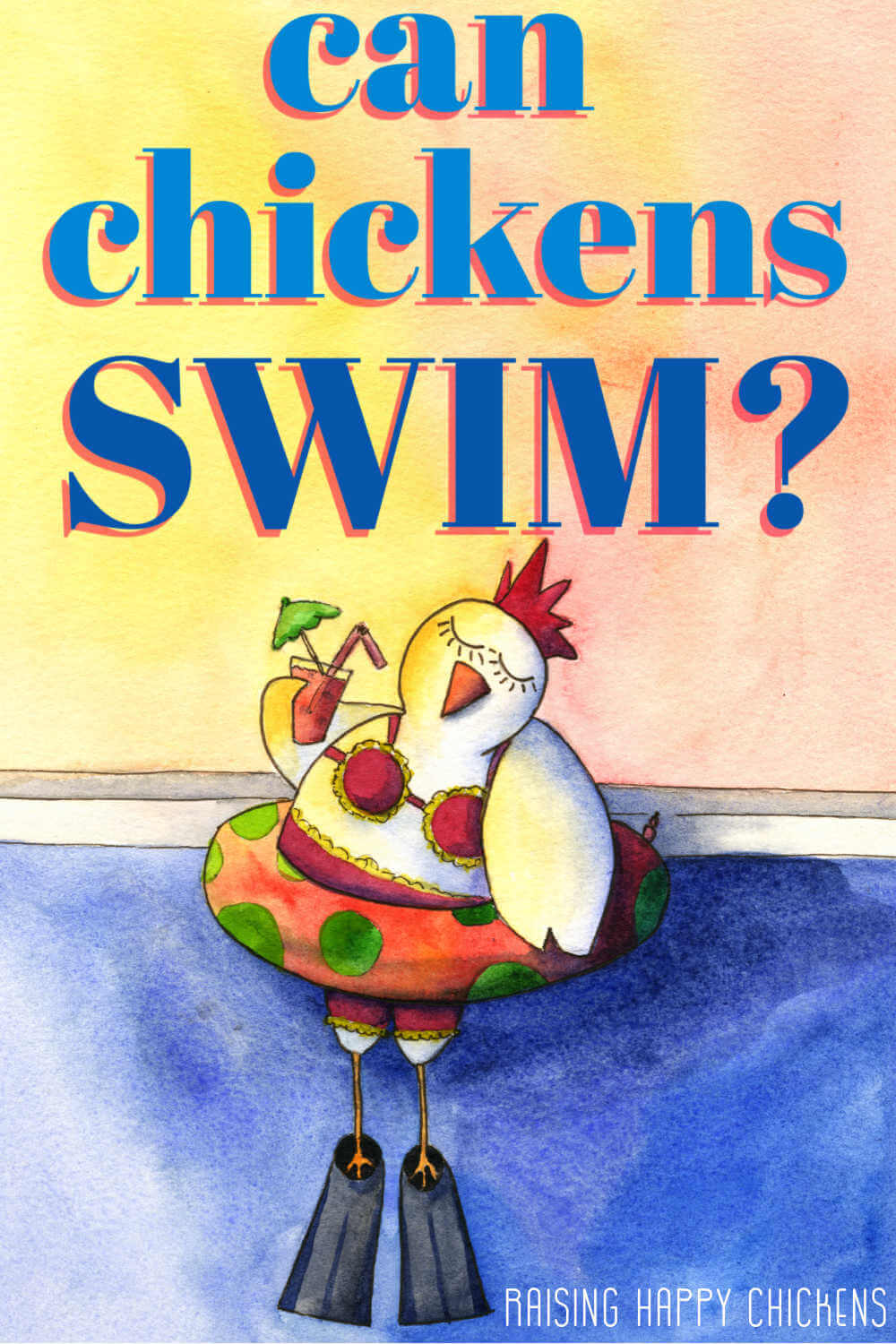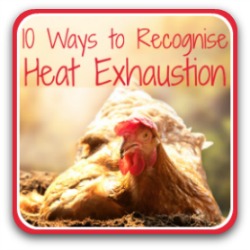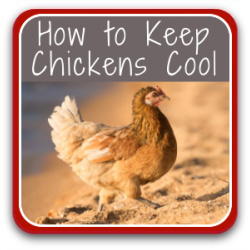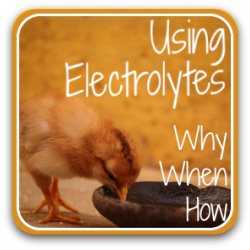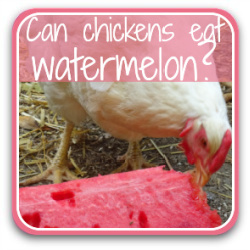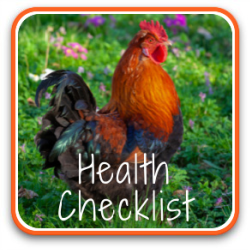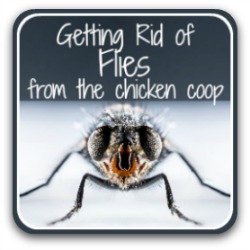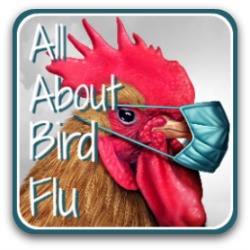Can chickens swim? Should they?
The weather's scorching. Your flock is showing signs of heat exhaustion. You're trying to find ways of cooling them off. Is the swimming pool the answer?
Chickens are very poor at dealing with heat. Cold winters, not so much of a problem. All those feathers do an excellent job of keeping them warm.
But when temperatures soar in the summer, there's a very real danger that your flock will overheat and dehydrate very quickly.
Water is an important part of keeping them cool. Drinking it, eating fruits like watermelon with a high water density, pecking at frozen treats, having access to some home made electrolytes are all excellent ways of keeping their core temperature under control.
But what about "dunking" your chickens in water? Is the swimming pool or even a kiddies' paddling pool a good solution? Can chickens swim, or do they sink? Do they even like being in water?
And if not, what is a good way of cooling their core temperature and keeping your whole flock safe?
Quick links.
This is a long, detailed article. If there's something specific you want to know, use these links – but make sure you don't miss some vital information.
Can baby chicks swim?
Let's deal with this one straight away.
The answer is a very strong "no".
There are two reasons why young chicks should never have access even to bowls of water, even if it's very shallow:
- baby chickens do not have feathers. They are covered in down. Down has no water-resistance: instead, it absorbs water. Waterlogged down will pull chicks underwater and they will drown.
- chicks with wet down will become chilled very quickly. Cold is one of the most common killers of baby chicks.
So do not, ever, allow your baby chicks to go anywhere near a swimming pool, paddling pool or rock pool. In fact, don't even leave open water containers around babies.
Use containers which can be kept off the ground or, even better, use hanging waterers.
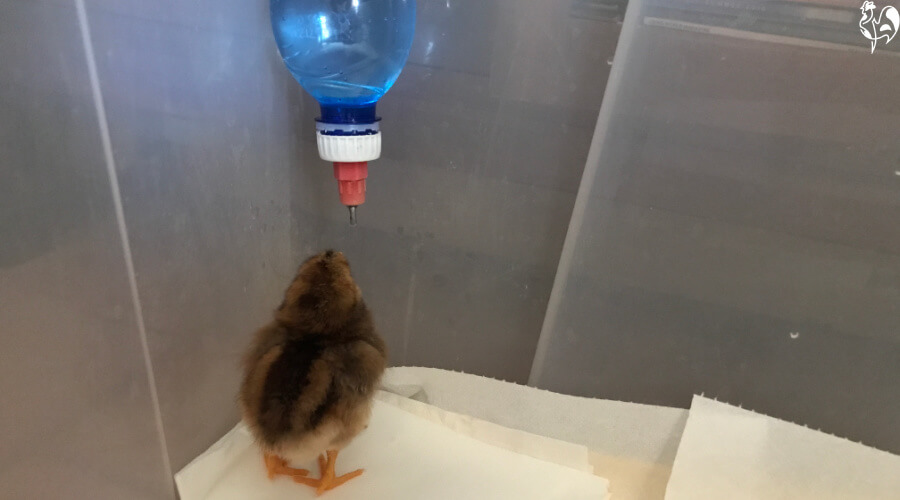 Hanging waterers are safe and clean.
Hanging waterers are safe and clean.So: can an adult chicken swim?
The short but incomplete answer is yes, chickens can swim. Or at least, they can float for a short time.
And if they find themselves in water they will instinctively move their feet in an effort to try to find a way out.
But chickens are not ducks. They are not built for swimming. The areas they originate from are forests, not lakes.
Additionally, if you have chickens you will know that they don't react well to new or different situations, specially if they feel unsafe.
Water is not a natural environment for a chicken. So naturally speaking, chickens will not choose to enter water of any depth, let alone a swimming pool.
For that reason, most chickens will panic if they find themselves in deep water. And a panicked, flapping chicken will tend to splash about and saturate her feathers with water in seconds.
It's estimated that a placid chicken can float for ten minutes or so before she sinks – if she doesn't panic. If she does, it can be all over in as little as 60 seconds.
Which leads to an important question...
Do chickens like water?
You've probably seen videos on YouTube of chickens in swimming pools. Mostly, viewers find them "cute" and funny.
But what does a chicken's body language tell us about whether the chicken is enjoying it or not?
Let's take a look at this short video as one example.
This is a very calm hen! But notice this...
- The chicken does not choose to get into the pool. She's put there by her people.
- She stays completely still. She may be calm – or she may be so frightened she freezes.
- Bobbing her up and down and twisting her round to see whether she will continue to float is not done for the chicken's benefit. It's done for the entertainment of people, and it's simply unkind.
- The video lasts for two minutes and her feathers are already beginning to soak. Remember the fact above: "It's estimated that even a placid chicken can float for ten minutes or so before she sinks".
- This is an above ground swimming pool. Most pools – whether above or below ground – are controlled with chemicals. It's never a good idea to expose your chickens to chemicals unnecessarily. Ammonia in particular is known to cause excessive mucus production and damage the lung's membranes (1).
Now take a look at this even shorter video.
This is a Livorno (Leghorn) chicken, and it's much more typical behaviour not only for that breed, but any chicken placed into water.
- Initially she seems calm, but as soon as she realises where she is, she feels threatened and scared. She simply wants to get onto dry land where she feels safe.
- In her distress she flaps and panics. Flapping chickens mean wet feathers, and wet feathers will sink a chicken in under 60 seconds. Had she not got out of the pool by herself, this hen would have been at risk.
Still think swimming pools are a good way of keeping chickens cool in summer?
We've looked at the anecdotal evidence of chickens in water. What does the biological evidence of a chicken's anatomy tell us?
What are the physiological signs that chickens aren't meant to swim?
Let's start with the most obvious differences between chickens and waterfowl, and what those differences tell us about a chicken's relationship with water.
Feet: webbed vs clawed.
Think about when you go swimming. To move through the water, you cup your hands. Swimming with your fingers open won't get you very far. If you want to move exttra quickly or underwater, you might add flippers to your feet.
Similarly, consider the difference between a waterfowl's feet – or any water-based bird or animal's – and a chicken's.
Webbed feet are designed to displace water. Ducks are very skilled swimmers.
Clawed feet are designed for foraging – scratching round in grass and dirt looking for bugs.
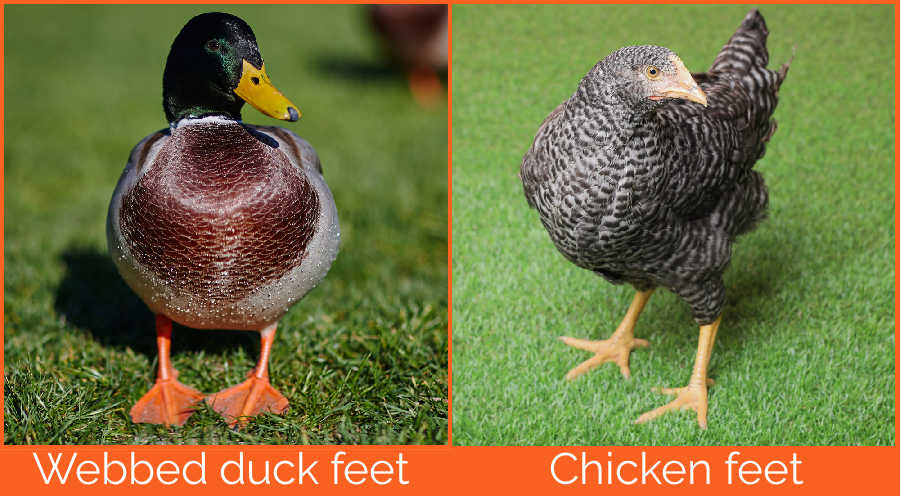
The position of the legs is also a give-away...
Most waterfowl have legs set towards the back of their body. It gives them extra power in the water, and their cute "waddling" motion when they're walking on land.
Poultry legs are close to the centre of the body, making them balance easily on land but have little power when on water.
So chickens' feet are clearly not naturally built for water.
Does that mean they won't try to swim if they find themselves in water? No – they'll do whatever they can to get out and into their natural, land-based environment.
But it does demonstrate that chickens are not naturally intended to swim.
Feathers.
Birds' feathers are quite complex structures which often only become obvious under a microscope(2).
- Waterfowl have tiny hooks along the edges of their feathers called barbs or barbules. These barbs have evolved to hook together and trap air, making water-based birds naturally able to remain afloat.
- Chickens also have barbs, but they haven't evolved to the same extent. They are water resistant, so they will to some extent protect from rain, but they're not water proof. They will quite quickly absorb water and become saturated, rather than creating pockets of air.
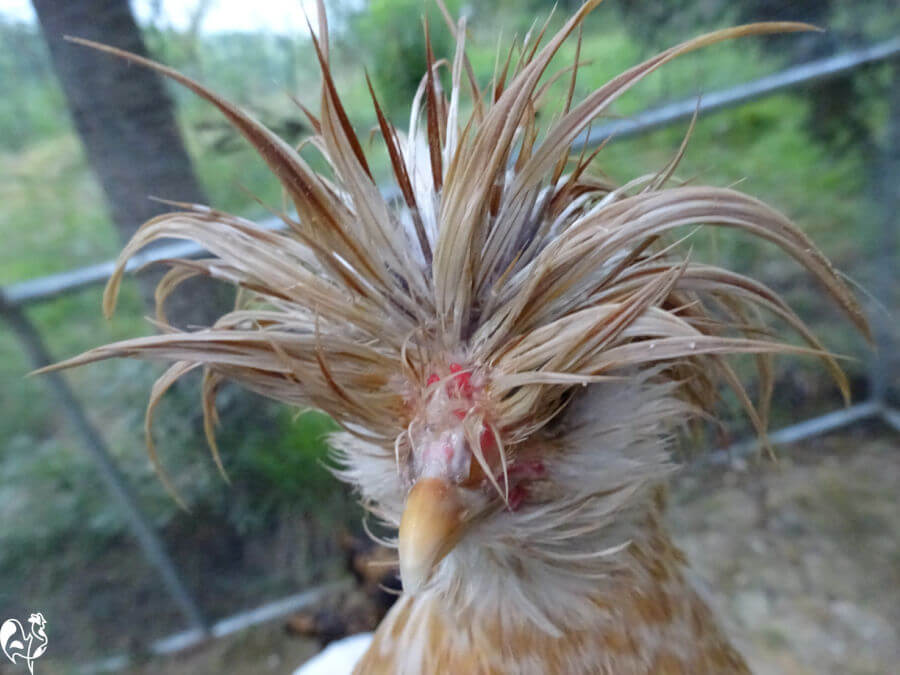 My Polish rooster, Sandro, after some time in the rain.
My Polish rooster, Sandro, after some time in the rain.One breed which would find it especially difficult to float for more than a couple of seconds is the Silkie.
Silkies do not have barbs, instead carrying the downy feathering which is characteristic of the breed.
A Silkie finding herself in water will become saturated and drown within a couple of seconds.
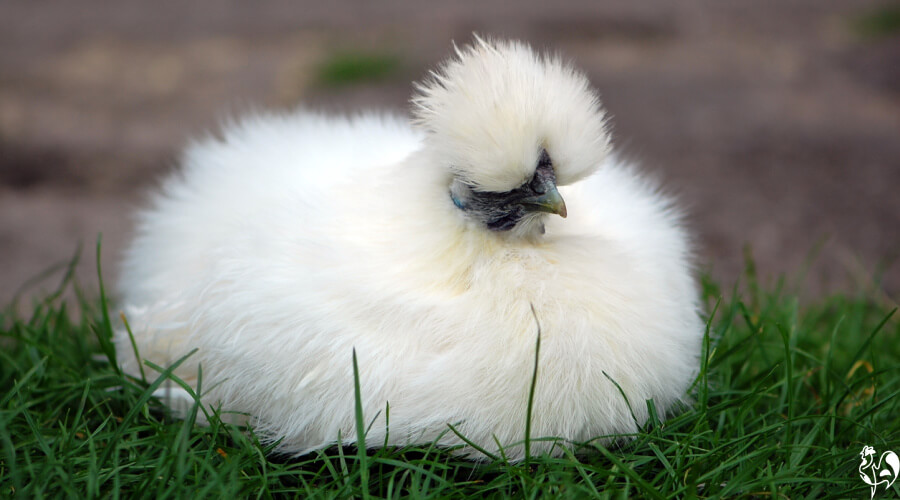 A Silkie's feathering is down and will quickly become saturated.
A Silkie's feathering is down and will quickly become saturated.Oil glands.
Most birds have oil (uropygial) glands which they use to preen their feathers and keep them in top quality.
These oil glands also provide different levels of water resistance in the feathering(3).
- A water bird's oil glands are substantial, and the oil is spread quickly and efficiently amongst their feathers by bills which are usually quite large and flat.
- A chicken's oil glands are small, and the chicken's pointed beak is only able to distribute small quantities of oil through the feathers.
- As a result, the water bird's oil distribution helps create a water-resistant barrier which absorbs very little water.
- The chicken's poor oil distribution means their feathers are not water-resistant, but are more likely to become relatively quickly waterlogged.
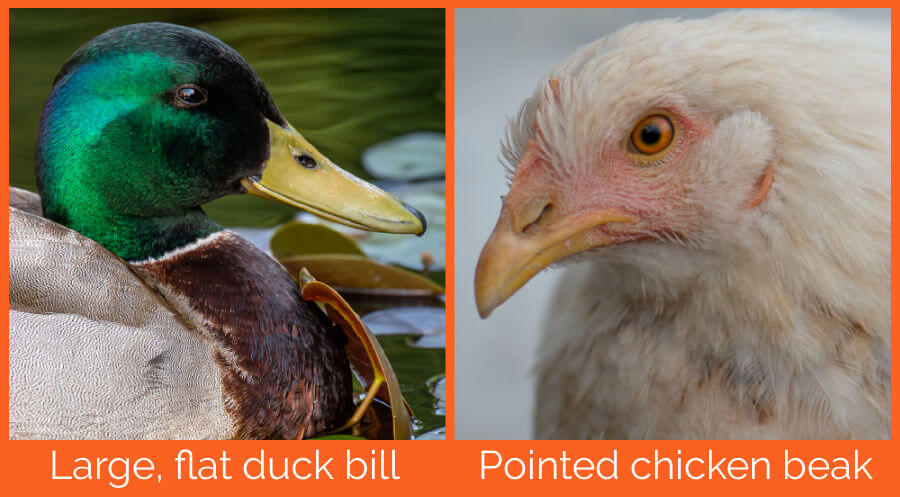
So both the network of barbs in the waterfowl's feathering, plus their ability to spread larger amounts of lipids among their feathers, make an efficient water-resistant barrier which the chicken simply does not have.
What if a chicken falls into a pool by accident?
- Chickens can die very quickly of hypothermia. If you find a chicken who's soaking wet, dry the excess water from her feathers with a towel and use a hairdryer on a warm (not hot) setting until she's completely dry.
- Prevention is always better than cure. If you have a swimming pool, pond or even a child's paddling pool, make as sure as you can that they're kept separate from your chickens.
- If your chickens free range and may be able to access water, make sure you remain with them in order to be able to rescue them should they fall in.
- For garden ponds, use stones, bricks or wooden planks to make sure that, if your chickens do fall in by accident, they're able to find a way out as quickly as possible.
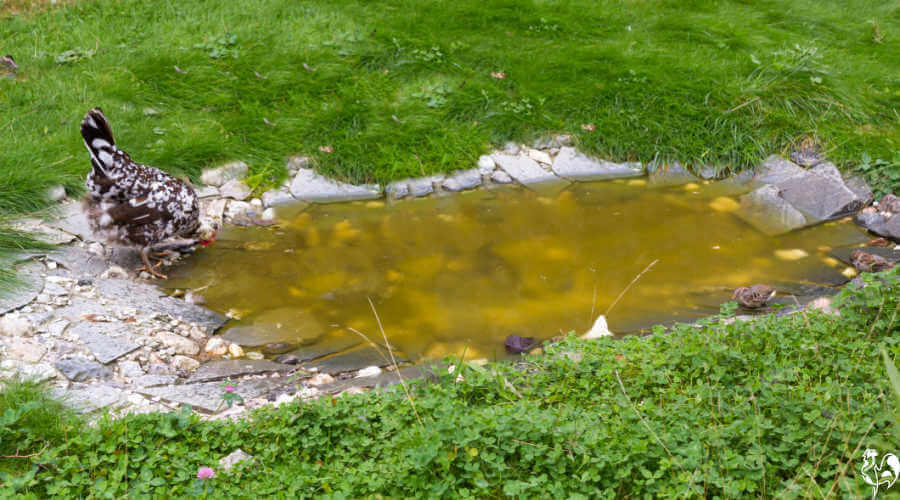 This garden pond uses stones and shallow edges to help animals and birds get out easily.
This garden pond uses stones and shallow edges to help animals and birds get out easily.How to cool down chickens in very hot weather.
If you're concerned about your chickens becoming over-heated during very hot weather, there are simple, effective ways of cooling them down.
Not swimming, but take your chickens for a paddle.
If your chickens are showing signs of excessive heat stress, cooling them down in water can work. Here's how to do it in stages, safely.
- Some chickens will use a shallow wading pool, such as a children's paddling pool. Make sure it's in shade, and fill it with no more than two inches of cool water.
- If that doesn't work (my chickens refuse point blank to use a paddling pool) try providing a heavy container – this granite dish (which is an affiliate link) might. Again, fill it with cool water – they may use it to drink or to stand in.
- If even that doesn't work, use a hose pipe to trickle a stream of cold water across the run, allowing the flock to paddle in it to keep cool if they choose to. Be careful though – if it's standing water it may attract mosquitoes.
- In extreme circumstances when your chickens are clearly suffering, half fill a bucket with cool water and stand your chickens in it, one at a time, up to the centre of their chest.
- Do not leave your chickens unattended near water, and don't leave them even partly immersed in it for longer than a few minutes.
More articles about keeping your chickens safe.
Sources.
A lot of "facts" you'll find on the internet are often people's individual views, based on inaccurate information repeated from poor quality sources.
The information I provide in this article and others is based not just on my own experience, but on evidenced facts from scientific, peer-reviewed research and books from highly respected and experienced poultry keepers such as Gail Damerow.
Some of the trusted sources I have used in this article are these.
1. Jacob, Dr. J: The Avian Respiratory System. Pub. USDA National Institute of Food and Agriculture, 2022.
2. Thompson, Mya: Everything You Need to Know About Bird Feathers. Pub. University of Cornell, Bird Academy, 2014.
3. Zeisler-Diehl et al: Detection of endogenous lipids in chicken feathers distinct from preen gland constituents. Pub. Protoplasma, 2020.
